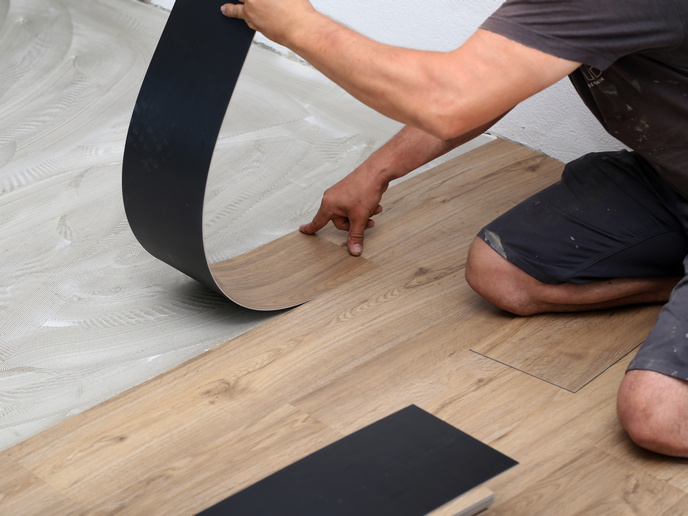Turning old floors into new
As Europe transitions to a circular economy, so too must the building and construction sector. “By embracing a circular economy, the building sector can reap more value from existing assets while also keeping valuable resources and materials in the economy and out of the landfill,” says Martin Schlummer, a researcher at the Fraunhofer Institute for Process Engineering and Packaging IVV. Unlike the ‘produce, use and dispose’ approach of a linear economy, a circular economy looks to ‘reuse, recycle and remanufacture’, with disposal being a last resort. Unfortunately, some old building materials weren’t designed with recycling in mind. Take for example soft-PVC, a plasticised material that has long been used in flooring. Because this material can contain various chemicals that were legally compliant at the time of production but are heavily regulated today, recycling can be a challenge – if not impossible. “To recycle this end-of-life flooring, we first have to remove the plasticisers from the PVC, and even then we can only recycle that PVC if we manage to reduce the phthalate load from 10-20 % down to concentrations below around 1 000 ppm,” explains Schlummer. As a result, post-consumer PVC flooring is not recycled and is instead being either landfilled or incinerated. But this could soon change, thanks in part to an innovative recycling process developed by the EU-funded CIRCULAR FLOORING project. “Our goal was to test and upscale a physical recycling technology to both remove plasticisers and recycle them into non-toxic alternatives,” adds Schlummer, who serves as the project coordinator.
From floor covering to circular flooring
The process begins by collecting waste floor coverings and shredding them into smaller particles. These particles are then treated using a special solution that separates the PVC from the plasticisers. Next, plasticiser compounds are deactivated using catalytic hydrogenation. These compounds can then be recycled into REACH-compliant alternatives such as 1,2-Cyclohexane dicarboxylic acid diisononyl ester (DINCH), a plasticiser used in the production of flexible plastics. Meanwhile, the recovered PVC is upgraded via tailored additives, at which point it can be reused in new floor coverings and resold into the market. The entire process was successfully demonstrated at a new, state-of-the-art technical plant located at Fraunhofer’s premises. “The circular flooring products being produced at this plant have already been integrated into new PVC flooring with very good properties,” notes Schlummer.
Recycling of end-of-life PVC flooring now possible
The project clearly demonstrated that end-of-life PVC containing legacy additives like plasticisers no longer need to be excluded from recycling. “By enabling sustainable, holistic resource recovery at a technological scale, the CIRCULAR FLOORING project is helping the construction sector close the loop,” concludes Schlummer. The project team is currently looking for partners to further upscale and commercialise the technology, as both investors and/or operators. They are also in discussion with PVC suppliers interested in the technology as a new add-on to integrate recycled resin into their own product portfolio.
Keywords
CIRCULAR FLOORING, PVC flooring, recycling, circular economy, building and construction, remanufacture, recycle



